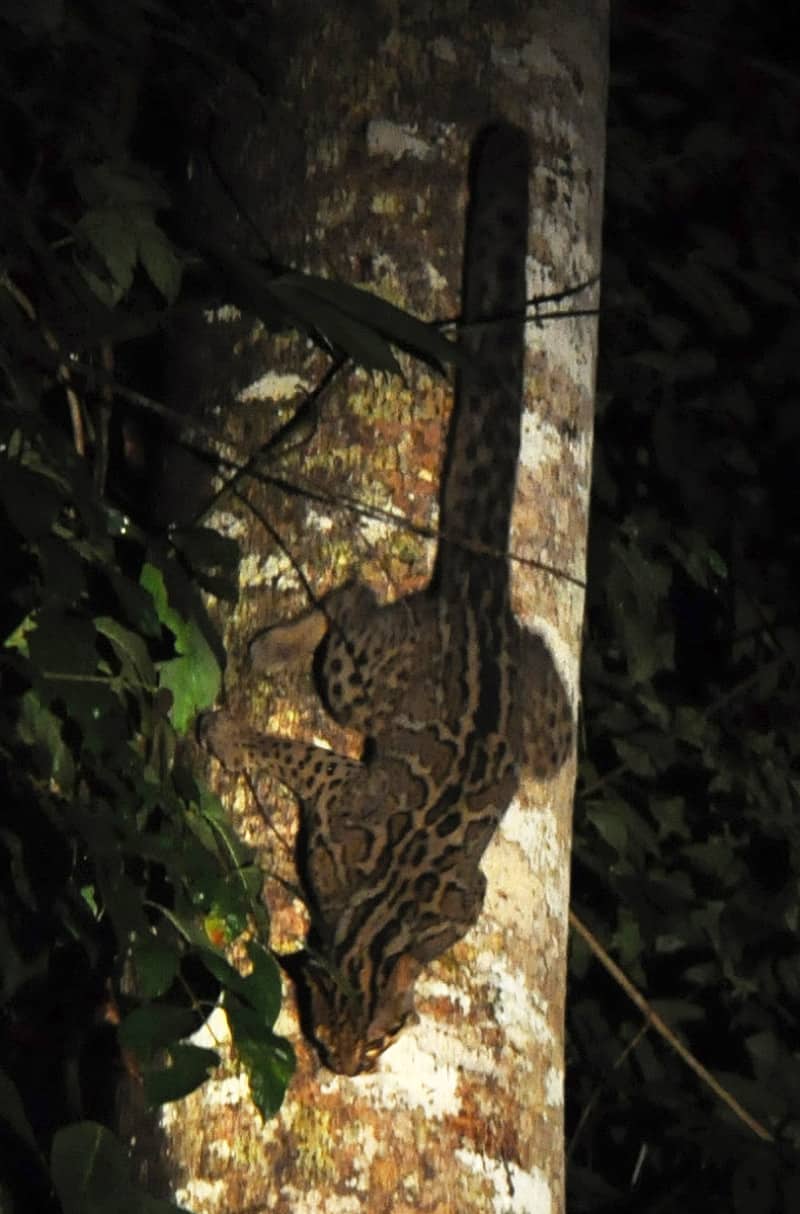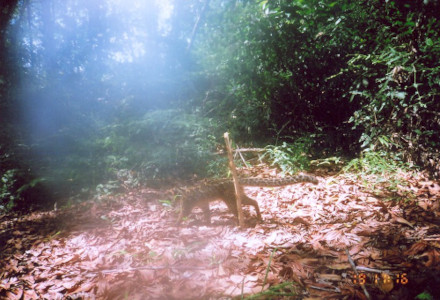
Marbled Cat Facts
- This beautiful creation of Nature and evolution most frequently goes by the descriptive common name of the Marbled Cat. Somewhat uncommonly, that’s presently the only globally used general moniker for this intriguing species of wild feline.
- Within scientific circles, however, it’s better known by its technical title. Like many such, though, it’s a relatively difficult name for the layperson to pronounce. That’s because the small yet amazing mammal bears the formal title of Pardofelis marmorata.
- It received that slightly tongue-twisting honorifc due to the efforts of the respected English naturalist, William Charles Linnaeus Martin. He accomplished the first recorded acknowledgement of the creature as a separate and distinct species in 1836.
- It’s actually closely related to two other equally remarkable wild felines. These close genetic cousins hold the names of the Borneo Bay Cat and the Asian Golden Cat. Each of these three diverged from shared ancestors approximately 9.4 million years ago.
- While not ideal, its current population and range appear to be relatively stable. This fortunate situation also seems to hold true throughout the entirety of that territory. The IUCN, therefore. presently lists the animal as Near Threatened on its Red List.
- Sadly, the fabulous Marbled Cat nevertheless faces many ongoing threats to its continued existence. Deforestation continues to form an ever-present danger to the species. Now, however, it faces the perils posed by climate change, like most species.
Related Articles
Fishing Cat Golden Tabby Tiger Amur Leopard
Marbled Cat Physical Description
The stunning Marbled Cat quickly captivates and amazes those fortunate enough to encounter one in the wild. The carnivore typically does so due more to its appearance, though, than its physical measurements. That’s because it’s smaller than many relatives.
This tendency further holds true for individuals of both genders. Many species display varying degrees of the physiological characteristic of sexual dimorphism. Specimens of this distinctily evolved feline, however, displays no outwardly noticeable degree of that trait.
In terms of general size, it’s been compared to a common domestic house cat. That’s with one exception, however. That has to do with the tail of the beautiful wild cat. In this specific species, that appendage grows much bushier, and may be longer than the body.
Individuals of both sexes attain a head and body length that averages between 18 – 24 in (45.7 – 61 cm). The tail itself, meanwhile, varies significantly in length between cats. This bushy appendage grows to a length that averages from 14 – 22 in (35.6 – 55.9 cm).
This species’s weight also varies widely among mature examples of the Marbled Cat. That occurs due to various factors, including, of course, availability of prey in different ranges. Overall, though, this measurement ranges from about 4.4 – 11.0 lbs (2 – 5 kg).
It’s its general appearance, however, that understandably garners the most attention. The coat develops as thick and soft. This additionally varies ini background from dark grayish-brown, through yellowish-brown to reddish-brown. Black stripes also form on the head.
- Kingdom: Animalia
- Phylum: Chordata
- Class: Mammalia
- Order: Carnivora
- Family: Felidae
- Genus: Pardofelis
- Species: P. marmorata
Marbled Cat Distribution, Habitat, and Ecology
The masterpiece of evolution that’s the Marbled Cat evolved as native to a limited range of the globe. That’s most unfortunate, to be certain. Yet where that zone of habitation occurs probably won’t surprise many people. It’s native to a small part of Southeast Asia.
More precisely, it’s only known to live within specific sections of a few places. That’s the Himalayan foothills, India, Nepal, southwest China, and also the islands of Borneo and Sumatra. It’s currently unknown if the impressive feline ever lived in a greater area.
The extraordinary cat also evolved decided preferences for its choice of habitat. Due to that, the animal primarily chooses to make its home in regions of relatively dense forest. Even more specifically, these must be moist, and mixed evergreen-deciduous tropical.
Individuals do appear outside of such habitats on occasion, though. Some live in regions of bamboo forests and peat swamps. Impressively, it’s also adapted to high altitudes. A few observations place specimens at altitudes of as much as 12,500 ft (3,810 m).
Due to the reclusive nature of the Marbled Cat, we still know little about some aspects of this species.Nonetheless, a few facts have been learned about the elusive creature. Fo one, distinguishing itself form others in yet another way, it’s mainly arboreal.
Observations also indicate that the nature of this habitat serves a dual purpose. It likely provides it most of its prey. That’s believed to consist of such animals as squirrels, birds, reptiles, and rodents. Its own natural predators continue to remain unknown at this time.
Species Sharing Its Range
Mandarin Duck Bharal Golden Pheasant
Check out our other articles on 7 Gorgeous Invertebrates of Georgia, Bristlecone Hemlock, Vintgar Gorge, Black Mamba, Southern Darwin’s Frog, Moon Orchid

